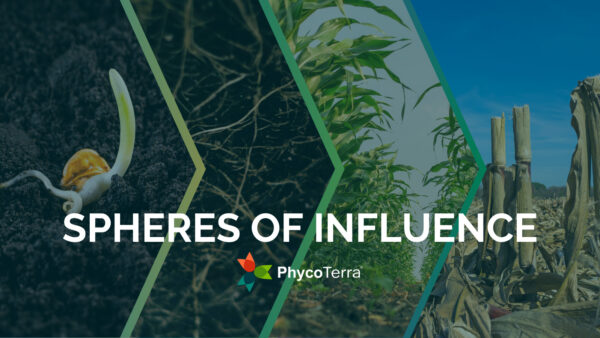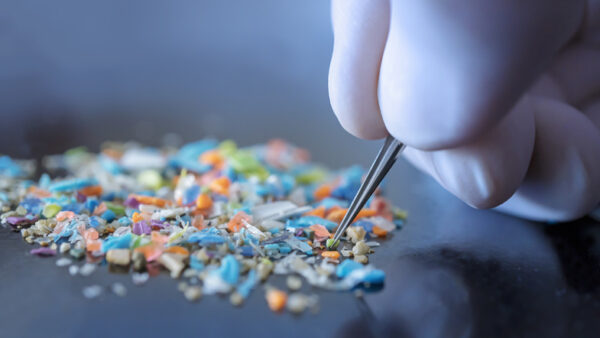New technologies are proving to be an asset to up-and-coming plant breeders, ensuring a healthy supply of them for the seed industry.
When Kirby Nilsen was working on his undergraduate degree, he says he was unsure of what he wanted to pursue as a lifelong career.
That is, until he came across the field of plant breeding.
“Having worked in plant breeding programs prior to and during my undergrad, I certainly recognized that as a potential area to pursue employment,” he says. “It wasn’t until after taking fourth year plant breeding and genetics courses that I knew for sure that I wanted to be a plant breeder.”
Nilsen, 31, is a doctorate student at the University of Saskatchewan in Saskatoon, Sask., working in Curtis Pozniak’s wheat breeding program at the Crop Development Centre. He’s excited to be part of a field of study he says is making huge strides the world over, as a new generation of plant breeders uses new tools to unlock nature’s secrets and improve plants to be more nutritious, more resistant to disease and environmental stresses, and to yield better for farmers.
Nilsen’s story of falling in love with plant breeding is a story that, fortunately, is becoming more common. It’s music to the ears of Rale Gjuric, founder of the Manitoba-based Haplotech and director of the University of California, Davis, Plant Breeding Academy (PBA).
Nilsen represents a new generation of breeders who use the latest technological tools to do a job that, despite being as old as agriculture itself, is more important than ever.
“In principle, things are changing technologically, but the role of the breeder doesn’t change at all,” Gjuric says.
It wasn’t long ago that it looked as if plant breeding was in danger as a profession. The rise of genetic technologies fueled a belief that plant breeding would become obsolete, he says.
“There was an attitude prevalent in the 1990s that traditional plant breeding was on its way out, that we wouldn’t need it anymore because we’d have scientists just inserting genes into plants and creating great new varieties,” Gjuric says. “As a result, universities just weren’t training as many new plant breeders.”
The industry could perhaps be forgiven for thinking plant breeders were a dying breed. Considering the profession is thought to be approximately 9,000 to 11,000 years old by most estimates, it’s easy to fall into the trap of believing it will sooner or later be replaced by newer disciplines.
Instead, new technologies have made the role of the breeder even more pertinent, Gjuric says. Young breeders, such as Nilsen, benefit.
“It’s like an engineer working in a factory in the 1940s compared to now. They do the same job, but the factory has changed,” Gjuric says. “They just have different tools now.”
Opening Doors
Those new tools go far beyond GM technologies, and expand into the realm of gene editing with techniques such as CRISPR, which allows scientists to manipulate the genome of a plant without introducing any foreign material.
Students have access to these new tools early in their careers — in many cases, even before they’ve graduated high school, according to Gijs van Rooijen, chief scientific officer for Genome Alberta.
“What we see now is a fair amount of projects where high school students are doing the usual agronomic projects, but we’re seeing them start to incorporate a lot of genetics into those projects,” he says. “They start to recognize that genetic analysis, especially the ability to get genomic analysis done quickly, is going to be a powerful tool in assisting plant breeders in developing their desired varieties much faster.”
That means many of those students will end up becoming plant breeders themselves.
“If you’re interested in seeds and plants, learning about and using these new tools will help you become successful in that field,” Van Rooijen. “These students are only becoming more sophisticated in their thinking. They’re looking at the whole genome of the plant.”
Individual genes are important, Van Rooijen explains, but the genetic factors that affect these genes are important as well. In addition to genetics, there’s the concept of epigenetics — the effect of the environment on the genetics themselves. It’s a subject that’s important for up-and-coming plant breeders to familiarize themselves with.
“If you are generating a new cultivar under highly stressed conditions, epigenetic markers are being placed on DNA, and that’s being inherited from generation to generation,” Van Rooijen says. “That affects the seeds themselves.”
In addition, students are looking at developing more sophisticated seed coatings that incorporate specific microbes or microbial environments. The sky is the limit for modern plant breeders, Van Rooijen adds.
“You see projects at the national science fair where students are sequencing microbes typically found in and around plant environments,” he says. Then they’re sifting through this information to find out what microbes are present, what they’re doing, and how seed companies can learn from that to come up with coatings containing microbes known to be beneficial for the plant to fight diseases, increase nutrient intake and improve water efficiency, he shares.
Big Changes
The new breeding environment makes things exciting for young people, and the chance to use these new tools to open doors that remained closed for thousands of years will only encourage more people to get into breeding, Nilsen says. Even at the young age of 31, he continues to be inspired not just by older breeders who came before him, but by younger ones coming up behind him.
He recently served as a mentor for some high school students working on a science fair project.
“When I was starting out, we didn’t have a lot of the opportunities you see now. A good example is these high school kids doing some fairly complex projects. Hearing their enthusiasm about what they do, it definitely rubs off on you.”
Thankfully, the number of breeders coming out of university programs is on the rise, Gjuric notes. This is partly due to the work done at the PBA, which has attracted attention and serves to emphasize the important role plant breeders play.
“For 15 or 20 years, universities weren’t training breeders in a classical way, and then when we did a study on the industry, we found there is a huge need for plant breeders. The PBA filled an immediate need. We took scientists and taught them traditional plant breeding concepts,” he says.
“We showed that this classical training is very important. It’s not about old school versus new school. Our training at the PBA incorporates all the new tools. We’re seeing more and more universities paying attention to training plant breeders. The message from the industry is very strong: We need breeders.”
The PBA now operates programs not only in North America but also in Europe, Asia and Africa.
“In the U.S. alone, we need around 100 breeders a year just to replace people who are retiring. That’s a big number,” Gjuric says.
Thankfully, the rise of technology will help to fill that void, Van Rooijen says.
“Using some of these advanced skills young people are acquiring, we’ll see niche and value-added crops. There might be smaller acreages, but we can use it as an opportunity to diversify our economy. Seed traits that make processing easier are being developed more often and more rapidly. It used to be that breeders did their job with respect to yield, but I think there’s an opportunity to look at some processing traits that can be incorporated into seed.”












